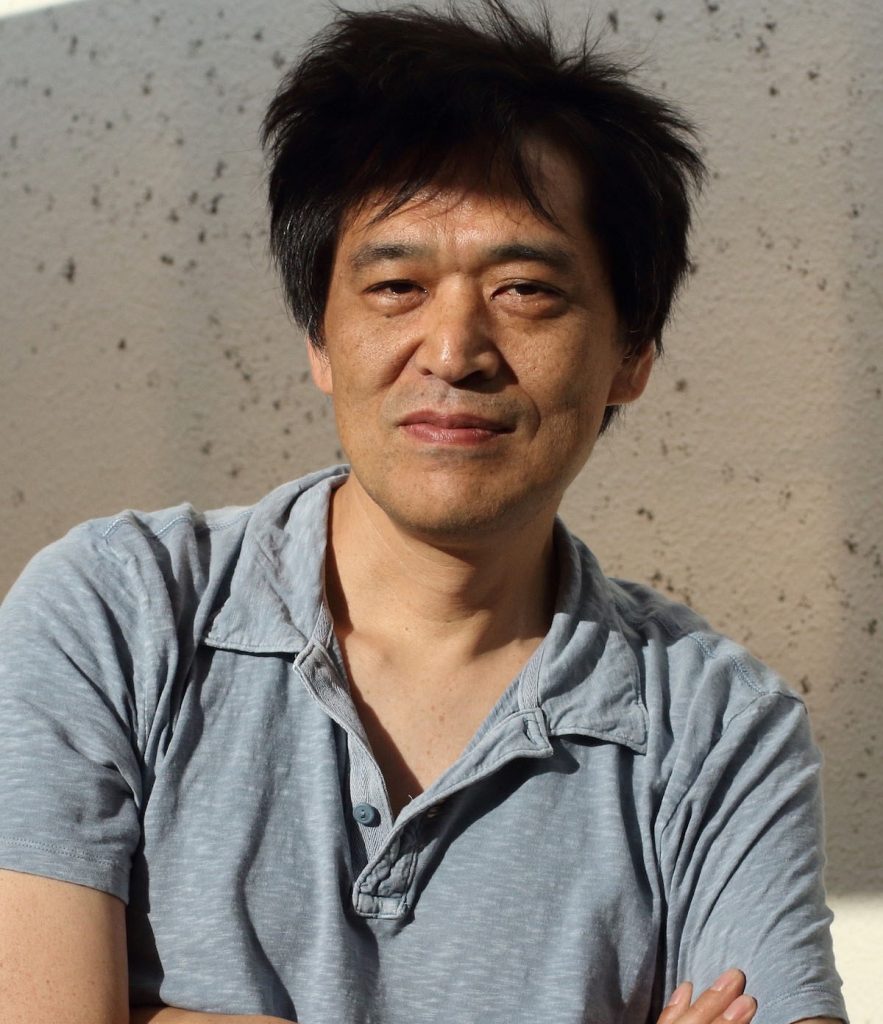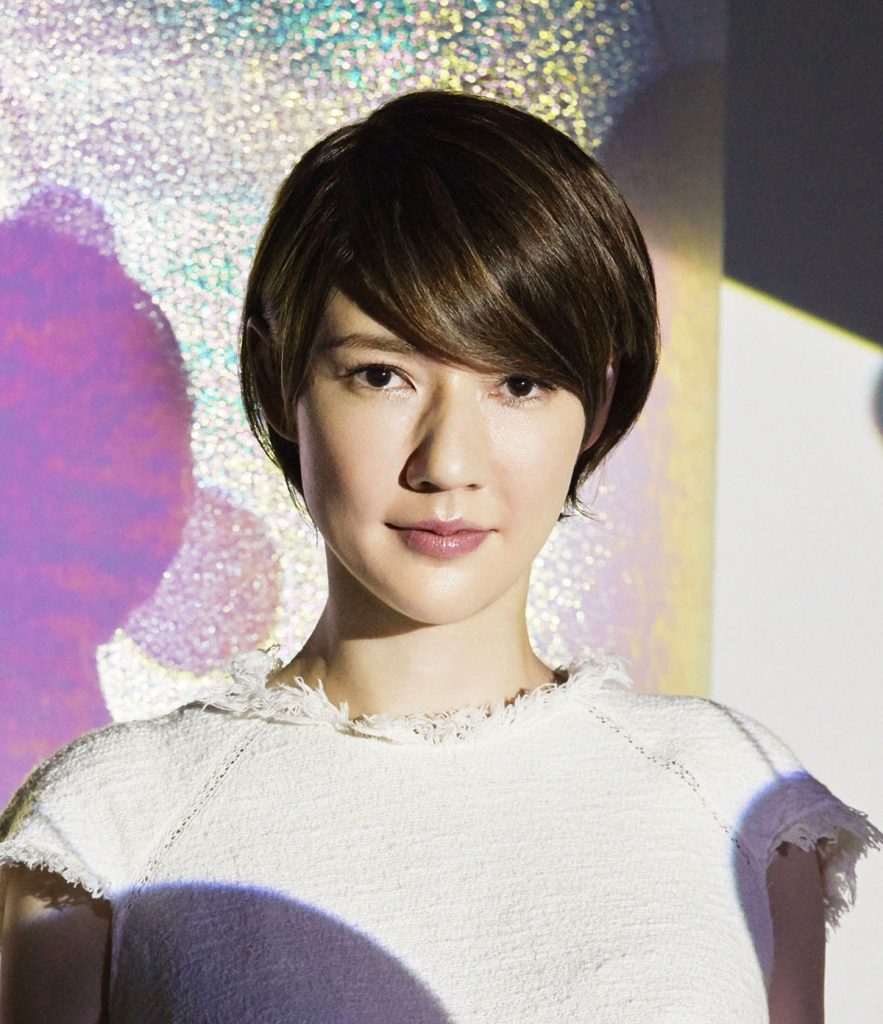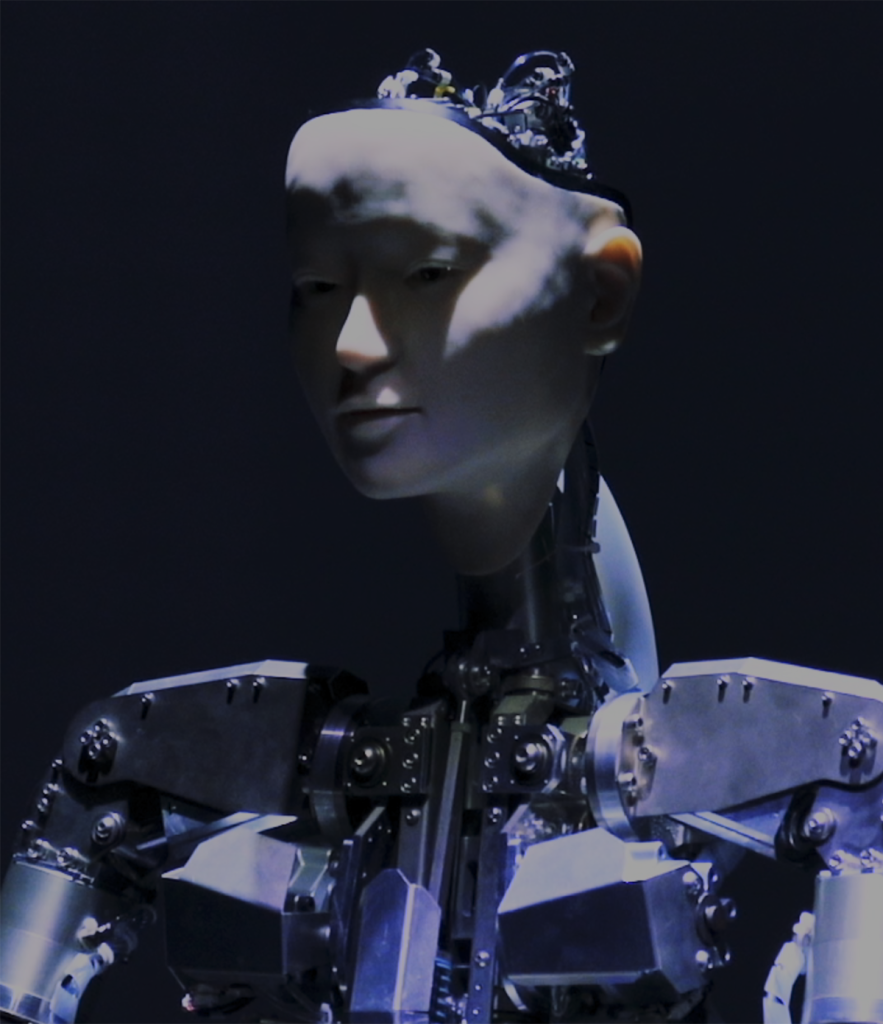Speaker: Takashi IKEGAMI ((Professor of Graduate School of Interdisciplinary Information Studies, University of Tokyo ), Sputniko! (Artist, Associate Professor at the Tokyo University of Arts), and Alter 3 (Android)
Moderator: Yuko HASEGAWA (Director of Art and Design, International House of Japan, Director of the 21st Century Museum of Contemporary Art, Kanazawa)
University of Tokyo professor Takashi Ikegami, who has been researching artificial life for over 20 years, and multimedia artist Sputniko! known for her works inspired by emerging technologies like artificial intelligence and the metaverse, will discuss the future of society, culture, and humanity. They will be joined by the Alter 3, autonomous android equipped with the Alife artificial life engine.
・・・
What Is Interdisciplinary Talk?
Our orderly ways of life have been disrupted in many places around the world, notably in Ukraine and Gaza, and there is little prospect of an early recovery. The issues modern society must consider, such as generative AI, climate change, and DEI promotion, have also grown more complex. The I-House Art and Design Division, under the leadership of Director Yuko Hasegawa, is organizing discussions among experts from different fields to explore the roles culture and art can play in promoting empathy and communication and connecting today’s divided cultural, political, economic, scientific, and other domains.

Takashi IKEGAMI
is Professor at the University of Tokyo since 2027. Dr. in Physics from the University of Tokyo (1989). After working at YITP, Kyoto University, and Kobe University, he became an Associate Professor at the University of Tokyo in 1994. His works encompass both the arts and sciences and deal with complex systems and artificial life. In 2018, he organized the ALIFE International Conference. Ikegami most frequently attended and gave the keynote address at Conf. Complex Systems in 2020, SWARM International Conference in 2019, and others. His publications include “Ugoki ga Seimei wo Tsukuru” (Seidosha, 2007), “Ningen to Kikai no Aida” (co-authored, Kodansha, 2016), and “Tsukutte Ugokasu ALIFE” (co-authored, O’Reilly Japan, 2018). His artistic activities include Filmachine (with Keiichiro Shibuya, YCAM 2006), Mind Time Machine (YCAM, 2010), Scary Beauty (with Keiichiro Shibuya, 2018), ALTER the Android KAGURA(2020), Alternative Machine’s Snow Crash (White House, 2021), VR Reverse Destiny Bridge (Aichi, 2022).

Sputniko!
is a British/Japanese artist and speculative designer based in Tokyo. She creates film and multimedia installation works that explore the social and ethical implications of emerging technologies, especially in the themes of gender and feminism. She has recently exhibited her works in exhibitions such as the New Eden: Science Fiction Mythologies Transformed at ArtScience Museum (2023; Singapore), DXP (Digital ransformation Planet):Towards the Next Interface at 21st Century Museum of Contemporary Art, Kanazawa (2023; Kanazawa, Japan), and Myth Makers—Spectrosynthesis III at Tai Kwun Contemporary Museum (2023; Hong Kong). Sputniko! is currently an Associate Professor of Design at the Tokyo University of Arts. From 2013 to 2017, she was an Assistant Professor at the MIT Media Lab, where she founded and directed the Design Fiction group. To date, Sputniko!
has had her pieces included in the permanent collections of museums such as the Victoria & Albert Museum (London, UK), the 21st Century Museum of Contemporary Art, Kanazawa (Kanazawa, Japan), and M+ Museum (Hong Kong).
Photo: Mami Arai

Alter3
The Alter android line was developed in 2016 in order to research not what can be done by automation, but rather how human beings would react to an autonomous robot. It is being pursued jointly with the University of Tokyo and Osaka University in order to explore fundamental questions of whether robots can obtain a sense of life, and what life itself may mean.
Alter is not intended to be an android identical in appearance to human beings. Rather, only the face, neck, and arms up to the elbows are outfitted with prosthetic skin. The other parts are exposed machinery, with forty-two actuators (a computer-controlled system using compressed air) moving like joints. These movements are not pre-programmed, but rather based on a central pattern generator (CPG), which functions like the human spinal cord, and a neutral network of 1,000 simulated neurons that fire in real-time. In addition, optical and distance sensors allow for autonomous and spontaneous movement, creating a profusion of actions based on reacting to the surrounding people and environment. This results in unexpected movements even the developers could not foresee, and the memory of these actions in turn allows Alter to continue evolving.
The name Alter comes from the concept of internal change and transformation of the android, as well as the notion of a second self, or “alter ego,” and the idea of this being an “alternative” form of expression and life.
Alter 3 is the third generation in this line. New cameras have been installed in the eyes, and the mouth is now capable of producing sound, with dynamic movement also incorporated. In addition, it comes equipped with the ALIFE Engine™, a dynamics generation engine, with the operating system and all aspects of the robot software having been developed by the Alternative Machine Inc.